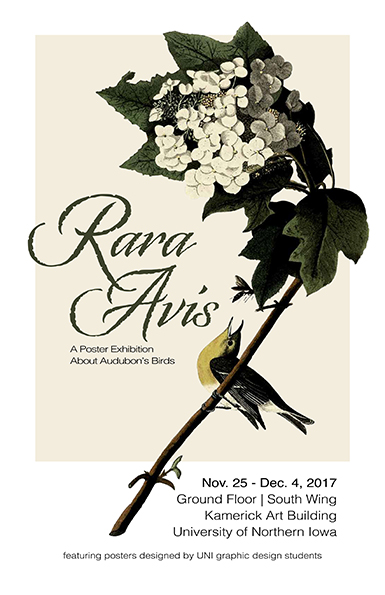 |
| Audubon Poster © Samantha White 2017 |
Above and below Reinterpretations, in poster form, of John James Audubon's The Birds of America, designed by Samantha White, graphic design student at the University of Northern Iowa (2017).
•••
Louis MacNeice, The Strings are False: An Unfinished Autobiography. London: Faber and Faber, 1965. p. 127—
Dr. Johnson had said that the poet is not concerned with the minute particulars, with "the streaks on the tulip." This, I thought, was just where he was wrong and just where I met Mariette on a common ground. Mariette was crazy for the streaks on the tulip. At the same time I felt she made much ado not about nothing but about the obvious or the trivial. Her conversation was like a barber's scissors when he is giving his last retouches to the back of your head, clicking away very fast, very deftly, but apparently not making contact.
 |
| Audubon Poster © Samantha White 2017 |
Louis MacNeice, The Strings are False: An Unfinished Autobiography. London: Faber and Faber, 1965. pp. 73-74—
At school I no longer assumed that the masters were all my superiors. Some of them were ninnies. Mr. Cameron left us for a time and in his place we had a master from Galway—seedy, embittered, with a powerful brogue, a bad cough and always the same suit. He could not manage the chalk on the blackboard; the pieces of chalk from day to day, from month to month, harassed him with unending guerilla warfare, breaking in his hand, deploying to all corners of the room. "Damn the chark!" he would shout, hurling the remaining stub away from him. "The square on the hypotenuse is equal—Damn the chark!" And then, conscious of our grins, he would look ashamed, on the verge of tears, and surrender to a spasm of coughing.
 |
| Audubon Poster © Samantha White 2017 |














































